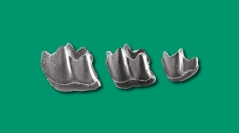

 Comptes Rendus Palevol
19 (1) - Pages 1-25
Comptes Rendus Palevol
19 (1) - Pages 1-25The Vallès-Penedès Basin in Catalonia (NE Spain) forms a biogeographically important connection between central Europe and the Iberian Peninsula. Whereas this is well documented for the late middle and early late Miocene, the early Miocene sequence has received far less attention. New excavations yielded micromammal assemblages from the Ramblian and early Aragonian. Among the euliphotyhplans and metatherian studied, we recognize seven non-soricid species (Amphiperatherium frequens von Meyer, 1846, Galerix symeonidisi Doukas, 1986 and Galerix remmerti van den Hoek Ostende, 2003, Desmanodon daamsi van den Hoek Ostende, 1997, Heterosorex neumayrianus Schlosser, 1887, Chainodus sp., Plesiodimylus sp.) and six species of shrews (Paenelimnoecus sp., Miosorex sp., cf. Clapasorex, cf. Oligosorex, cf. Florinia sp. and Soricinae indet.). They confirm the intermediate position of the Vallès-Penedès also at the time of the older faunas, but show that differences with the Iberian inland were less pronounced. These differences can be explained by higher humidity in the coastal region, as indicated by the presence of dimylids. The differences between this coastal area and inland basin confirm the potential of coastal regions as migration corridors.
Eulipotyphla, Amphiperatherium, Ramblian, Aragonian, biogeography, Western Europe